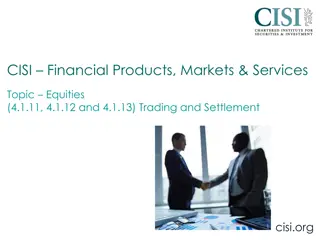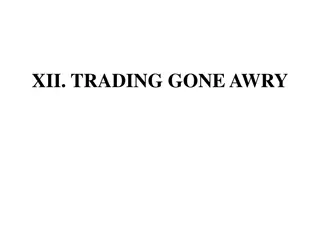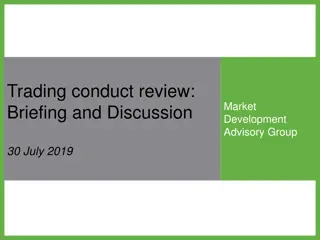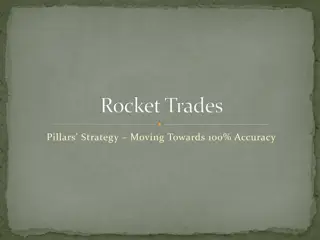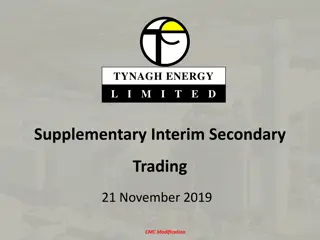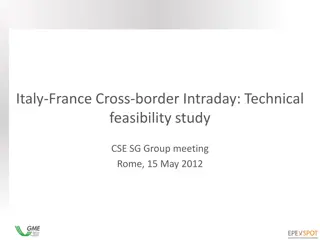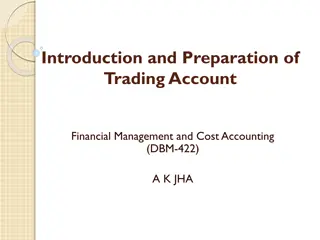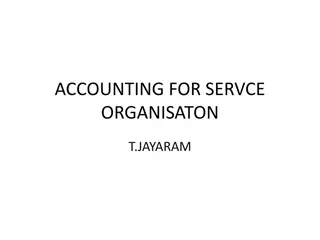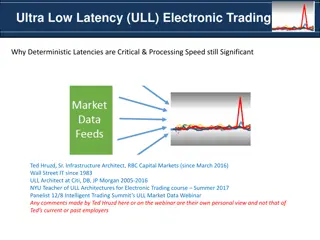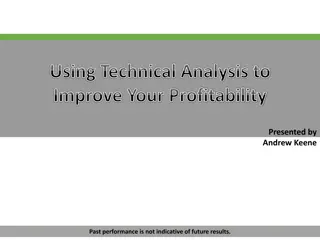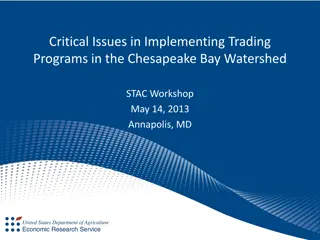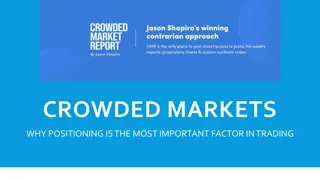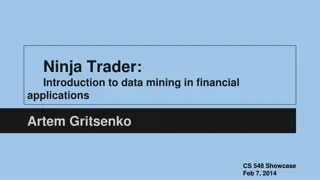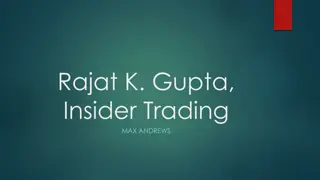Understanding Risk Management in Financial Trading
Risk management in financial trading involves forecasting and evaluating trade risks to minimize their impact. Professional traders prioritize risk management due to the high volatility of tradable instruments. Key aspects include project stake, trader's capital, lot sizing, calculating pip value, and stop orders to control trade outcomes in a volatile market.
Download Presentation

Please find below an Image/Link to download the presentation.
The content on the website is provided AS IS for your information and personal use only. It may not be sold, licensed, or shared on other websites without obtaining consent from the author. Download presentation by click this link. If you encounter any issues during the download, it is possible that the publisher has removed the file from their server.
E N D
Presentation Transcript
RISK MANAGEMENT Risk management involves the forecasting and evaluation of Trade risks while identifying procedures to avoid or minimize their impact. In the financial market, risk management is made top priority by professional traders considering the high volatility of price of most tradable instruments in short time Frames. Notable Quotes The essence of investment management is the management of risk not the management of returns Benjamin Graham The goal of a successful trader is to make the best trades, money is secondary Alexander Elder. If you don t know the Jewelry, know the Jeweler Warren Buffett. A management decision is irresponsible if it risks disaster for the sake of a grandiose future. Peter Drucker Project Stake
Traders Capital Trading the financial market requires two assets; Traders capital and Traders psychology. Lot Sizing: This determines how much of your capital is exposed for each pip movement on every trade executed in the market. A mis-management of any of these two assets would set back the ultimate goal; to make a given amount of profit at a set time. Standard Lot; 1.0 = 100 000 units (Base instrument) Mini Lot; 0.1 = 10 000 units ( Base instrument) Micro Lot; 0.01 = 1000 units ( Base instrument) Hence a trading strategy that does not factor in suitable risk management practices is bound to destroy the traders Assets. Nano Lot; 0.001 = 100 units (Base instrument) E.g. Purchasing a standard lot; 1.0, of USO/USD involves buying 100 000 units of USO ( United states Oil ) and In the words of Alexander Elder, a prudent trader manages his capital as carefully as a scuba diver does his Oxygen. inversely selling the same units of USD; the counter instrument. Project Stake
Calculating Pip Value: A pip is the unit of price Decimal place X Trade size Current market price USD/JPY Pip Value = 0.01 X 1000 = 0.07$ / Pip for a Micro-lot size 134.99 displacement on any traded financial instrument (FX and CFDs). To calculate this successfully, Average True Range: This is an indicator that is used EUR/USD Pip Value = 0.0001 X 1000 = 0.10 / Pip For a Micro-lot size 1.0204 = 0.10$ /Pip to calculate the average Pip displacement in a given market at a fixed period of time. Prices are traded in two basic decimal forms 4 Decima places; 0.0001 2 Decimal places; 0.01 Stop Orders: These are used my trader to automate the closure of open orders. Profits and losses are taken Most Commodities , stocks, Indices and JPY currency pairs have their prices calculated in 2 decimal places whereas, major currency pairs and some other instruments take the 4 decimal place model. making use of stop orders theses measures give a prudent trader some degree of control over the outcome of his trade entries in a highly volatile market. Project Stake


